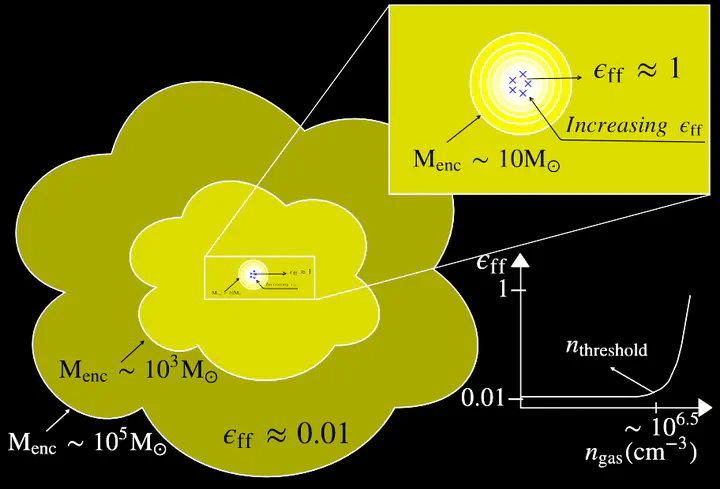Star formation thresholds

In Khullar et al (2019), we examined claims of star formation thresholds in observations. Most gas in giant molecular clouds is relatively low-density and forms star inefficiently, converting only a small fraction of its mass to stars per dynamical time. However, star formation models generally predict the existence of a threshold density above which the process is efficient and most mass collapses to stars on a dynamical timescale. A number of authors have proposed observational techniques to search for a threshold density above which star formation is efficient, but it is unclear which of these techniques, if any, are reliable. In this work we used detailed simulations of turbulent, magnetised star-forming clouds, including stellar radiation and outflow feedback, to investigate whether it is possible to recover star formation thresholds using current observational techniques. Using mock observations of the simulations at realistic resolutions, we show that plots of projected star formation efficiency per free-fall time εff can detect the presence of a threshold, but that the resolutions typical of current dust emission or absorption surveys are insufficient to determine its value. In contrast, proposed alternative diagnostics based on a change in the slope of the gas surface density versus star formation rate surface density (Kennicutt-Schmidt relation) or on the correlation between young stellar object counts and gas mass as a function of density are ineffective at detecting thresholds even when they are present. The signatures in these diagnostics is sometimes taken as indicative of a threshold in observations, which we generally reproduce in our mock observations, do not prove to correspond to real physical features in the 3D gas distribution.